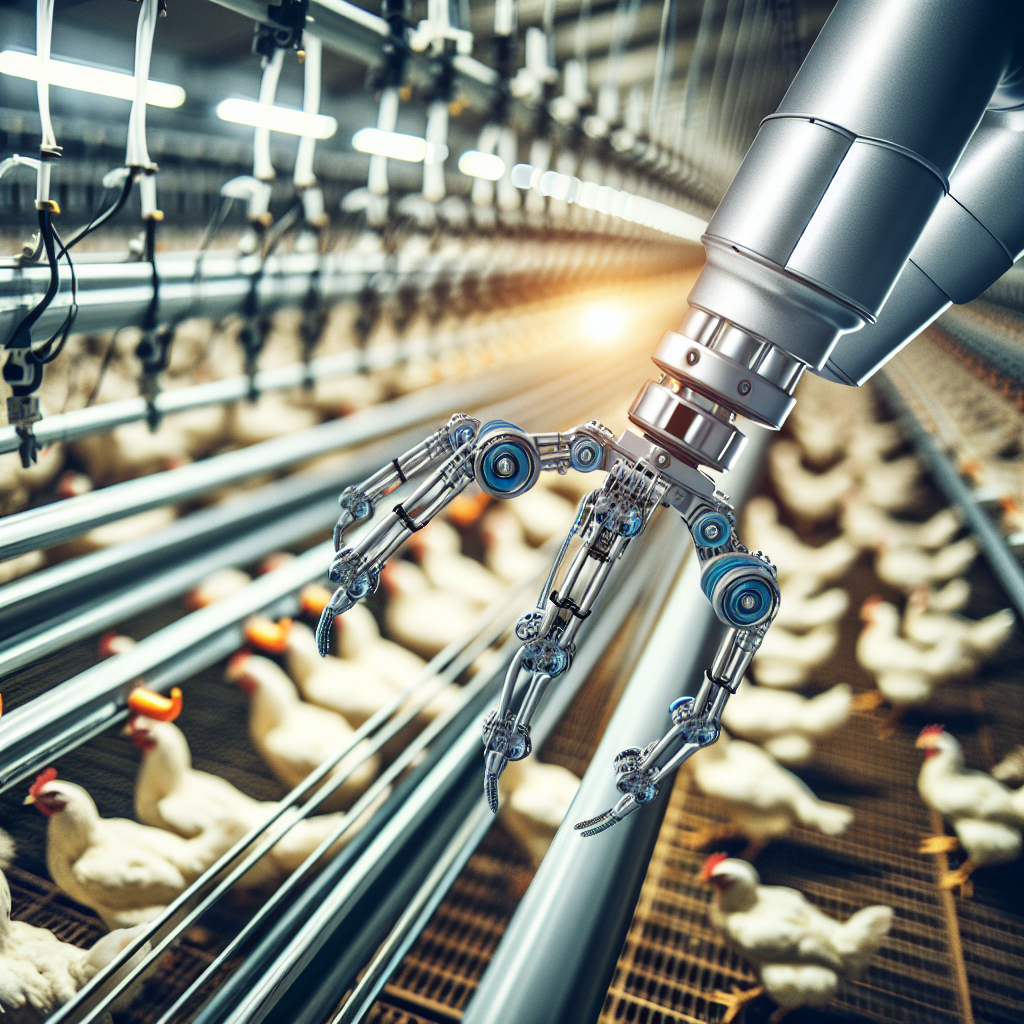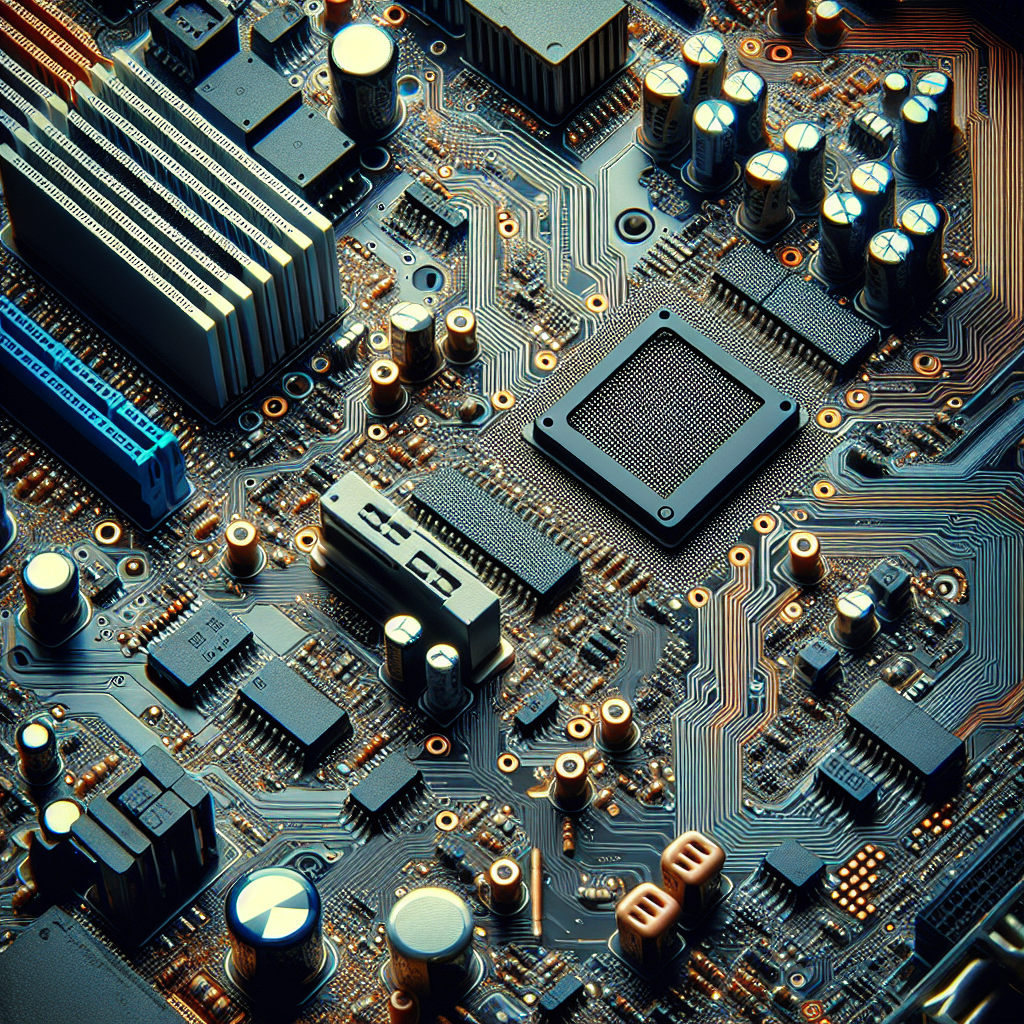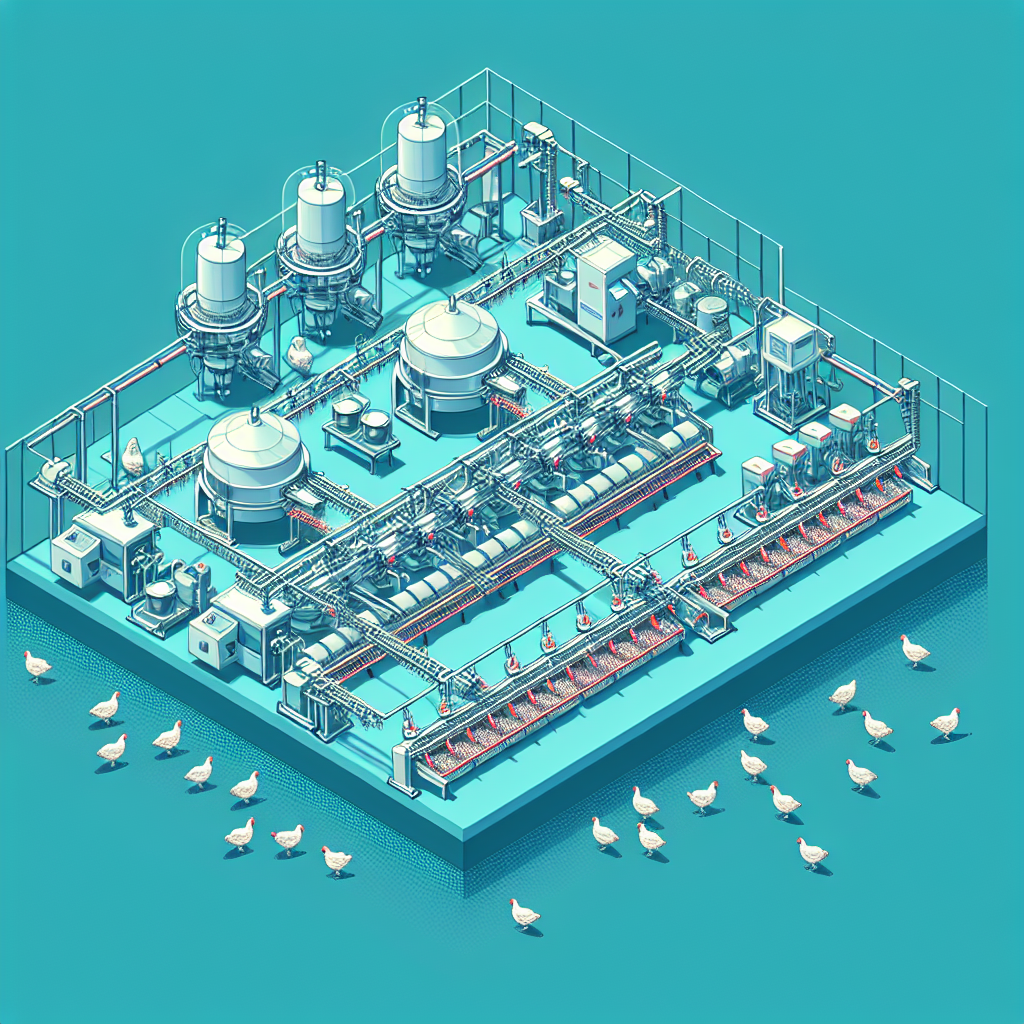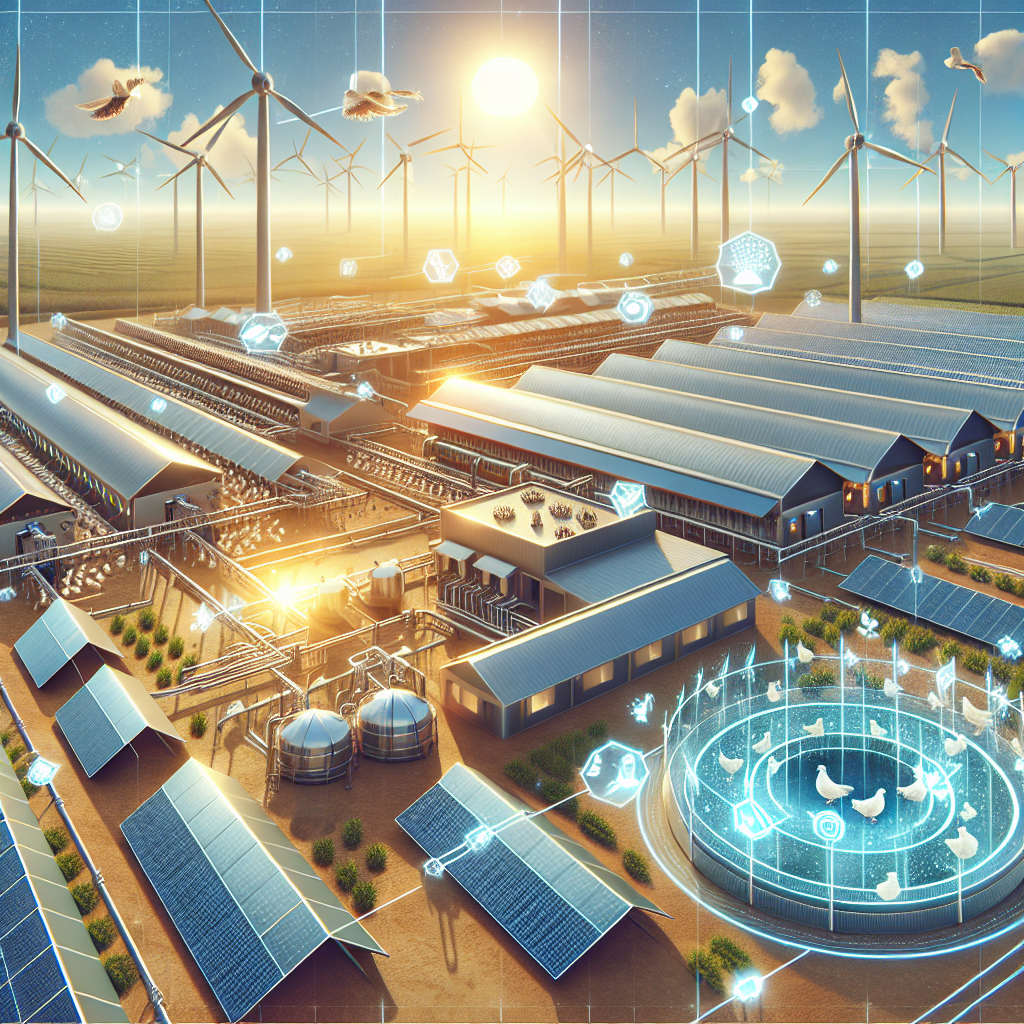In the realm of poultry farming, there’s a buzz of anticipation surrounding the potential tech trends that are predicted to shape the future. From advancements in automation to innovations in data analytics, it’s an exciting time for farmers and industry enthusiasts alike. With the promise of increased efficiency, improved animal welfare, and enhanced sustainability, these technological developments hold the potential to revolutionize the way we raise and care for poultry. So, what exactly are these notable tech trends that lie on the horizon? Let’s take a closer look at the exciting possibilities that await in the future of poultry farming. Yes, there are several notable tech trends that are being forecasted for the future of poultry farming. These advancements in technology have the potential to revolutionize the industry, making farming more efficient, sustainable, and productive. In this article, we will explore some of the key tech trends that are expected to shape the future of poultry farming.
Farm Automation
With the rapid advancements in robotics and automation, farmers can now benefit from using robotic systems in their poultry farms. These robotic systems can perform a wide range of tasks, such as cleaning, feeding, and even monitoring the health of the birds. By automating these tasks, farmers can save time, reduce labor costs, and ensure consistent and efficient operations.
Automated feeding and watering systems are another important aspect of farm automation. These systems are designed to deliver precise amounts of feed and water to the birds, ensuring that they receive the right nutrition and hydration. By automating this process, farmers can reduce feed wastage, optimize feed efficiency, and improve the overall health and productivity of their flock.
Automated egg collection systems are also gaining popularity in poultry farming. These systems can automatically detect and collect eggs from the nests, reducing the manual labor required for egg collection. The automated systems can also sort and grade the eggs based on their quality, making it easier for farmers to market and sell their products.
Precision Livestock Farming
Precision livestock farming involves the use of advanced technologies to monitor and manage the health and welfare of animals. This approach allows farmers to collect and analyze data in real-time, enabling them to make informed decisions and take proactive measures to prevent diseases and improve animal well-being.
Animal health monitoring is an essential aspect of precision livestock farming. By using smart sensors and monitoring devices, farmers can track various parameters such as body temperature, activity levels, and feeding patterns of the birds. This data can help identify any potential health issues at an early stage, allowing farmers to take prompt action and ensure the overall health of the flock.
Smart sensors for environmental monitoring are also becoming increasingly important in poultry farming. These sensors can measure and track parameters such as temperature, humidity, air quality, and ammonia levels in the poultry houses. By monitoring these factors, farmers can create optimal conditions for the birds, reducing stress, and improving their overall performance and well-being.
Genomic Selection
Genomic selection is a breeding technique that involves the use of genetic analysis to select the best animals for breeding. This technique allows farmers to identify animals with desirable traits and genetic potential, thereby improving the overall quality and productivity of the flock.
Advancements in genetic analysis have made it easier and more cost-effective for farmers to genotype their animals. With the help of DNA testing, farmers can now obtain accurate and detailed information about the genetic composition of their birds. This information can then be used to make informed decisions regarding breeding programs, selecting the best animals for breeding based on their genetic potential.
Improvement in breeding programs is another significant aspect of genomic selection. By using the information obtained through genetic analysis, farmers can develop targeted breeding programs to enhance specific traits such as disease resistance, growth rate, and egg production. This approach can lead to the development of healthier and more productive birds, ultimately benefiting the poultry industry as a whole.
Vertical Farming
Vertical farming is an innovative approach to poultry farming that involves the cultivation of crops and the rearing of poultry in vertically stacked layers or shelves. By using this vertical arrangement, farmers can maximize the use of space, reduce land requirements, and optimize resource utilization.
Indoor vertical farming systems provide a controlled environment for both crop cultivation and poultry rearing. These systems often incorporate technologies such as LED lighting, hydroponics, and automated climate control systems to create ideal growing conditions for the crops and comfortable living conditions for the birds. This approach allows farmers to produce a significant amount of food in a relatively small space, making vertical farming a highly efficient and sustainable method of poultry production.
Vertical integration of poultry farming is another trend that is gaining traction in the industry. This involves integrating different stages of the poultry value chain, such as breeding, hatching, rearing, and processing, into a single operation. By vertically integrating the production process, farmers can have better control over the entire supply chain, ensuring consistent quality, and reducing transportation costs and logistical complexities.
Artificial Intelligence
Artificial intelligence (AI) is playing a vital role in shaping the future of poultry farming. With its ability to analyze vast amounts of data and make predictions, AI can help farmers make better decisions, optimize operations, and improve overall efficiency.
Predictive analytics for poultry management is one area where AI is being extensively utilized. By analyzing data from various sources such as environmental sensors, feeding systems, and health monitoring devices, AI algorithms can identify patterns and trends that can help predict disease outbreaks, feed consumption patterns, and production yields. This predictive ability allows farmers to take preventive measures, optimize feed management, and ensure the overall well-being of the flock.
Automated data analysis for decision making is another significant application of AI in poultry farming. By automating the data analysis process, farmers can save time and resources, enabling them to make faster and more informed decisions. AI algorithms can analyze complex datasets and provide actionable insights to farmers, helping them optimize resource allocation, improve feed efficiency, and maximize productivity.
Alternative Protein Sources
The search for alternative protein sources is becoming increasingly important in the poultry industry. As the demand for poultry products continues to grow, finding sustainable and environmentally friendly sources of protein is essential.
Insect-based feeds are gaining attention as a viable alternative protein source for poultry feed. Insects such as black soldier flies and mealworms are rich in protein, and their cultivation requires fewer resources compared to traditional animal protein sources. By incorporating insect-based feeds into the diet of poultry, farmers can reduce dependence on conventional feed ingredients such as soy and fishmeal, thereby reducing the environmental impact of poultry production.
Lab-grown meat is another emerging alternative protein source that has the potential to revolutionize poultry farming. By culturing meat cells in a laboratory setting, researchers can produce meat in a sustainable and ethical manner, without the need for traditional livestock rearing. Lab-grown meat can be used as a component of poultry feed, providing a nutritionally balanced and environmentally friendly protein source.
Blockchain Technology
Blockchain technology is a decentralized and transparent system that allows for secure transactions and data sharing. In the poultry industry, blockchain can be used to improve transparency, traceability, and food safety assurance throughout the supply chain.
Transparency in the poultry supply chain is crucial for building trust and ensuring the quality of poultry products. By using blockchain technology, farmers can record and store information about each stage of the production process, from breeding and hatching to processing and distribution. This information can then be accessed by consumers, regulators, and other stakeholders, providing assurance regarding the origin and quality of the poultry products.
Traceability is another significant benefit of blockchain technology. By leveraging blockchain, farmers can create a digital record of each batch of poultry products, including information about the farm of origin, the feed used, and the processing methods. This allows for efficient tracking and tracing of products in case of quality issues or food safety recalls, enabling rapid response and minimizing the impact on consumers and the industry.
Virtual Reality
Virtual reality (VR) is an immersive technology that allows users to experience and interact with a simulated environment. In the context of poultry farming, VR can be used for training and simulation purposes, as well as for efficient design and management of farm layouts.
Training and simulation for poultry farmers is an area where VR can be highly beneficial. By creating realistic virtual environments, farmers can practice and perfect their skills in various tasks such as animal handling, disease diagnosis, and equipment operation. VR training can provide a safe and controlled environment for learning, allowing farmers to gain experience and confidence before implementing these skills in real-world settings.
Efficient design and management of farm layouts can also benefit from VR technology. With the help of VR simulations, farmers can visualize and optimize the layout of their poultry farms, considering factors such as barn design, equipment placement, and bird movement patterns. This can help farmers identify potential bottlenecks, optimize resource allocation, and improve overall efficiency and productivity.
Internet of Things (IoT)
The Internet of Things (IoT) refers to a network of interconnected devices that can collect and exchange data. In the context of poultry farming, IoT devices can be used for farm monitoring and real-time data collection and analysis.
Connected devices for farm monitoring can provide farmers with real-time information about various parameters such as temperature, humidity, air quality, and water consumption. By installing sensors and monitoring devices throughout the poultry farm, farmers can ensure optimal conditions for the birds, detect and address any issues promptly, and make data-driven decisions regarding resource allocation and management.
Real-time data collection and analysis are essential for optimizing poultry farm operations. By using IoT devices, farmers can collect and analyze data from various sources such as environmental sensors, feeding systems, and health monitoring devices. This data can provide valuable insights into the performance of the flock, enabling farmers to identify potential bottlenecks, optimize feed management, and improve overall efficiency and productivity.
Biometric Identification
Biometric identification involves the use of unique biological characteristics such as fingerprints or DNA to identify and track individuals. In the context of poultry farming, biometric identification can be used for individual animal tracking and monitoring, as well as for improving animal husbandry practices.
Individual animal tracking and monitoring can be greatly enhanced through biometric identification. By tagging or implanting birds with microchips or RFID tags, farmers can accurately track the movement and behavior of each bird. This data can provide valuable insights into individual bird health and performance, allowing farmers to take proactive measures and optimize management practices for each bird.
Improving animal husbandry practices is another area where biometric identification can be beneficial. By utilizing biometric identification technologies such as facial recognition or DNA analysis, farmers can accurately identify the genetic background, parentage, and health traits of each bird. This information can then be used to tailor management practices, including nutrition, vaccination, and breeding, to the specific needs and requirements of each bird.
In conclusion, the future of poultry farming is being shaped by a variety of notable tech trends. These advancements in technology, including farm automation, precision livestock farming, genomic selection, vertical farming, artificial intelligence, alternative protein sources, blockchain technology, virtual reality, the Internet of Things, and biometric identification, have the potential to transform the industry, making poultry farming more efficient, sustainable, and productive. By embracing these tech trends, farmers can optimize their operations, improve animal welfare, and meet the growing demand for poultry products in a responsible and environmentally friendly manner.




